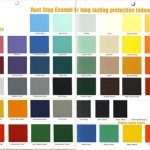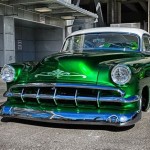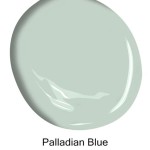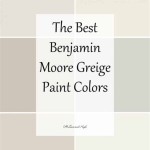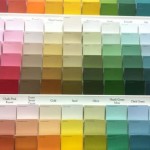Can a QR Code Match Paint From a Photo? Unveiling the Technology and its Limitations
The notion of instantly matching a paint color to a photograph using simply a QR code and a mobile device has generated considerable interest, especially within the realms of home improvement, design, and restoration. While the concept holds immense appeal, the reality of achieving a perfect match using current technology is more nuanced than a simple scan-and-match process. This article delves into the underlying principles, technological advancements, and inherent limitations involved in color matching from photographs, specifically addressing the role, or more accurately, the absence, of direct QR code functionality in this process. The article will explore the current functionalities available, the science behind color matching, and factors influencing accuracy of paint matching from photos.
The initial assumption of utilizing QR codes directly for paint color matching stems from their ability to store and transmit data efficiently. QR codes are predominantly used to link to websites, store contact information, or facilitate mobile payments. They do not possess the capability to directly analyze a photograph's color spectrum and translate it into a paint formula. The process of color matching from a photograph involves a series of complex steps, typically relying on specialized software algorithms and hardware components, some of which can be initiated via an application linked to a QR code.
Instead of acting as the color-matching engine, a QR code might serve as a gateway to a paint company's application or website. The app, in turn, would then utilize the device’s camera to capture the image and employ advanced color analysis algorithms. The application then compares the analyzed color data to a vast database of paint colors to find the closest match. It’s important to note that this entire process does not directly involve the QR code reading the color from the photo itself. Therefore, the statement "Can a QR code match paint from a photo?" is technically inaccurate. The QR code plays an indirect role by facilitating access to the tools and platforms that perform the color matching.
Understanding the Science of Color Matching
Accurate color matching involves understanding the principles of color science and employing instruments capable of precisely measuring color. The human eye perceives color based on the wavelengths of light reflected from an object. These wavelengths are typically measured using a spectrophotometer or colorimeter. These devices quantify color in terms of specific color spaces, such as CIELAB or RGB. The CIELAB color space, in particular, is designed to be perceptually uniform, meaning that equal numerical differences in CIELAB values correspond to approximately equal visual differences in color.
When a photograph is taken, the camera sensor captures the light reflected from the object. The captured image data is then processed to represent the color information of the pixels in the image. However, this process is not perfect. Factors such as lighting conditions, camera calibration, and image compression can all introduce errors in the color representation. Therefore, directly extracting accurate color information from a photograph is challenging.
The algorithms used in color matching applications attempt to compensate for these errors by analyzing the surrounding colors in the image and applying color correction techniques. These algorithms are constantly evolving and improving, but they are still not able to achieve perfect accuracy in all cases. The accuracy of the match depends on several factors, including the quality of the image, the complexity of the color, and the capabilities of the algorithm.
The Role of Technology in Color Matching
Several technologies contribute to the process of matching paint colors from photographs. These technologies encompass both hardware and software components. As mentioned previously, spectrophotometers and colorimeters are used to measure color precisely. These instruments are often used in paint stores to analyze existing paint samples and generate matching formulas. For photographic image analysis, specialized color matching software is crucial. This software employs algorithms to analyze the image data, correct for lighting and other distortions, and compare the measured colors to a database of known paint colors. The software also considers the substrate onto which the paint will be applied, as this affects the final perceived color. The gloss level of the paint also needs to be taken into account.
Mobile applications designed for color matching utilize the camera on a smartphone or tablet. These applications typically include features such as automatic white balance correction and color calibration to improve accuracy. App developers may also integrate machine learning models trained on large datasets of paint colors to enhance the matching process. These models can learn to identify subtle color variations and improve the accuracy of the match. Several paint manufacturers and retailers have developed their own applications for color matching, offering users a convenient way to find matching paint colors from their photographs. These apps are usually accessible through scanning a QR code, however the QR code only directs to the download site of the application and is not directly involved in the color matching process.
The combination of advanced algorithms, high-resolution cameras, and cloud-based databases has significantly improved the accuracy and convenience of color matching from photographs. However, it is essential to recognize the limitations of these technologies and the potential for error.
Factors Affecting Accuracy and Limitations
While technology has made remarkable strides in color matching from photos, several factors can influence the accuracy of the results. Lighting conditions are a critical element. Indoor lighting, outdoor lighting, and even the time of day can significantly alter the perceived color of an object. Fluorescent lighting, incandescent lighting, and natural daylight all have different spectral characteristics, affecting how colors are rendered in a photograph. Shadows and highlights can also distort the color information, making it difficult for the algorithm to accurately analyze the image.
The quality of the camera and its color calibration are also important factors. A high-resolution camera with good color accuracy will produce better results than a low-resolution camera with poor color calibration. Differences in device display settings can also affect the accuracy of the color matching process. The same image viewed on two different devices might appear slightly different due to variations in screen calibration and color gamut. This can lead to discrepancies between the color perceived on the screen and the actual color of the paint.
Moreover, the color matching algorithm itself has limitations. While these algorithms are designed to compensate for various distortions, they are not always perfect. Complex colors with subtle variations can be challenging to match accurately. The characteristics of the surface being painted can also affect the final perceived color. For example, a paint color might appear different on a smooth surface versus a textured surface. Similarly, the underlying color of the existing paint can influence the appearance of the new paint. It is crucial to consider these factors when using color matching applications and to test the matched paint color in the actual environment before committing to a large-scale painting project. Discrepancies can arise due to the inherent limitations of translating a 2D image into a real-world paint color, underscoring the need for careful evaluation and testing for optimal results.
In conclusion, while the notion of scanning a QR code to directly match a paint color from a photo is not a current reality, QR codes are often employed as a gateway to applications that utilize sophisticated algorithms and hardware to achieve approximate color matching. The effectiveness of these tools is contingent on various factors, including lighting conditions, camera quality, and the complexity of the color to be matched. Users must acknowledge these limitations and take appropriate precautions to ensure satisfactory results.

Paint Colour Match Valspar

Colour Matching With Valspar Paint Kezzabeth Diy Renovation Blog

The Moment Of Truth When I See If My B Q Valspar Cooliur Match Paint M Tiktok

Paint Colour Match Valspar
B Q Valspar Colour Matching Campaign Mec And Gumgum On Vimeo
Colour Matching With Valspar Paint Kezzabeth Diy Renovation Blog

Colour Matching With Valspar Paint Kezzabeth Diy Renovation Blog

How To Match Any Colour Valspar System At B Q

Era Paints Bq Parchment Gold Metallic For Lincoln Exact Match Touch Up Paint Spray Basic Kit Com

Paint Mixing Match Service Diy At B Q
Related Posts

